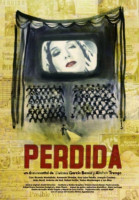Perdida Filming Locations

Where was Perdida filmed? Perdida was filmed in 3 locations across Mexico and United States in the following places:
Perdida Filming Locations
Chihuahua is one of the 67 municipalities of Chihuahua, in northern Mexico. The municipal seat is the city of Chihuahua, which is also the capital of the state of Chihuahua. As of 2010, the municipality had a total population of 819,543, up from 758,791 in 2005. It covers an area of 9,219.30 km².
A larger-than-life symbol of the entertainment business, Hollywood beckons tourists with landmarks like TCL Chinese Theatre and star-studded Walk of Fame. Highlights include Paramount Pictures, historic music venues like the Hollywood Bowl, and Dolby Theatre, home of the Oscars. Scenesters can choose from improv comedy clubs, retro-cool bars and velvet-roped nightclubs. Locals frequent eateries in nearby Thai Town.
Mexico City is the densely populated, high-altitude capital of Mexico. It's known for its Templo Mayor (a 13th-century Aztec temple), the baroque Catedral Metropolitana de México of the Spanish conquistadors and the Palacio Nacional, which houses historic murals by Diego Rivera. All of these are situated in and around the Plaza de la Constitución, the massive main square also known as the Zócalo.
Perdida (2009)
After being told that her family had made some of the worst films in the history of Mexican cinema, Viviana spent many years ashamed of that legacy and distanced herself from everything that the Calderón family had ever done. But a chance encounter sparked her interest and led to a 3-year quest to uncover the story of a family that had been involved in all aspects of the film business in Mexico and the United States -- theaters, distribution, and production -- whose rise and fall throughout the 20th century closely mirrored that of Mexican cinema as a whole, a once-powerful film industry that was now virtually nonexistent. The story that Viviana discovered through old film reels, photographs, newspaper articles, clips from the family's film vaults, and interviews with the survivors of Mexican cinema's golden eras included tales of romance and stories about movie and music legends like Ricardo Montalbán and the mambo king Damaso Perez Prado, and allowed her to make peace with a legacy of film pioneers.
